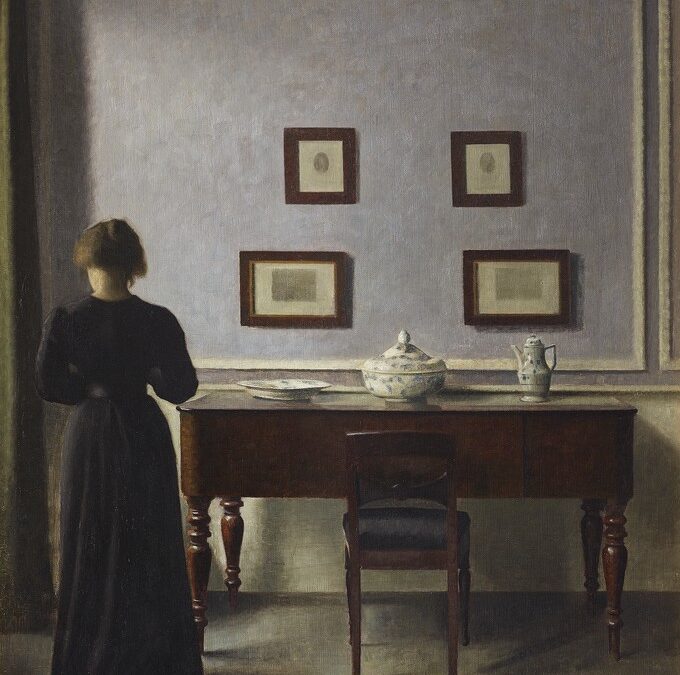
by Devarya Singhania | Nov 28, 2023 | Culture
I greeted autumn with bitterness this year. Toronto deprived me of it for longer and only provided a mediocre season. The trees were barely colourful, and they struggled to rescue me from all my burdens. In envying my welcoming reception of autumn last year, I’ve begun seeing today’s autumn as a foe.

by Jevan Konyar | Oct 15, 2023 | Culture
To reiterate my thesis in the plain English of the internet: the advent of the web coincided with what could have been a brief global hegemony of the English language, but its ravenous thirst for content perpetuated the conditions of its spawn.

by W. Song | Apr 9, 2023 | Culture
Danish painter Vilhelm Hammershøi was known to be shy, quiet, reclusive, and never quite keeping pace with the revolutionary movements of his time. His interiors are so subdued that they stand out on gallery walls when surrounded by paintings of his contemporaries, most of which are blossoming with colour.
His art, however, didn’t always have a place on these walls.

by Jevan Konyar | Mar 1, 2023 | Culture, Literature
Any definition of modernity is, by virtue of its subject, vertigo-inducing. A phenomenon that necessarily remakes the world in its image, modernity spawns a reality where everything that follows its advent is indicative of its presence. What makes defining modernity hard is that definitions are, naturally, compartmentalizations, and thus things to which modernity cannot lend itself: there’s modernity in your clothes, modernity in your food (I’m not just talking about microplastics), and there’s modernity on your bookshelf. Modernity is everywhere, and trying to catalog something that’s everywhere is an arduous, if not unthinkable, task.

by W. Song | Feb 8, 2023 | Culture
The model minority myth, or, “Asian stereotypes”—they are usually something along the lines of strict parents and “good at x,” where x may be any possible subject you can think of. As someone with an Asian background, I can attest that we sure do get a good laugh out of them—the former stereotype because it is pretty accurate, the latter because it is most certainly not, at least according to the aforementioned parents,
…and consequently, ourselves.

by Janna Abbas | Jan 17, 2023 | Culture, Literature
In a video for Crack Magazine, Japanese-American singer-songwriter Mitski makes the following statement: “You know, the sad girl thing was reductive and tired like five, ten years ago and it still is today,” in response to a fan tweeting that the day on which Mitski releases new music is a “big day for sad bitches.” Mitski’s statement is one we’ve been hearing a lot lately, in response to the onslaught of internet “sad girls,” who seem to have made it their mission to reduce popular media made by or about (young) women to a canvas that perfectly depicts their sadness. As a consumer and enjoyer of art that often gets the “for sad girls” label slapped on it, hearing Mitski’s response, I couldn’t help but agree with her and empathize with her frustration at having her art reduced to a pseudo-identity, but I also found myself feeling a sense of sympathy and understanding for the self-proclaimed “sad girls.”







